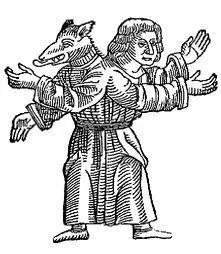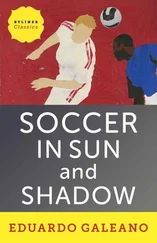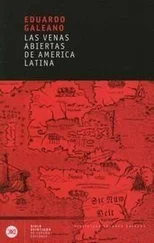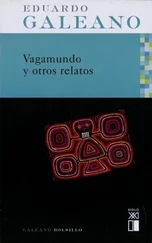
A condemned man shits gold coins.
Another hangs from an immense key.
The knife has ears.
The harp plays the musician.
Fire freezes.
The pig wears a nun’s habit.
Inside the egg lives death.
Machines run people.
Each nut dwells in his own world.
No one meets up with anyone.
All are running nowhere.
They have nothing in common, save fear of each other.
“Five centuries ago, Hieronymus Bosch painted globalization,” to quote John Berger.

In Siracusa, Sicily, back around the year 300, Saint Lucy gouged out her eyes, or had them gouged out, for refusing to accept a pagan husband. She lost her sight to win entry to heaven, and pictures show the saint holding a platter on which she offers her eyes to Our Lord Jesus Christ.
Twelve hundred and fifty years later, Saint Ignatius of Loyola, founder of the Jesuits, published in Rome his spiritual exercises. There he wrote this testimony of blind submission:
“Take, Lord, and receive all my freedom, my memory, my understanding, and my will.”
And as if that were not enough:
“To get everything right, I must always believe that what I see as white is black, if the Church hierarchy so determines.”

Knowledge is sin. Adam and Eve ate the fruit of that tree and look what happened to them.
Some time later, Nicolaus Copernicus, Giordano Bruno, and Galileo Galilei were punished for having shown that the earth moves around the sun.
Copernicus did not dare publish his scandalous revelation until he felt death approaching. The Catholic Church included his work in the Index of Forbidden Books.
Bruno, wandering poet, spread the word about Copernicus’s heresy: the earth was but one of the planets of the solar system, not the center of the universe. The Holy Inquisition locked him up in a dungeon for eight years. Several times he had the chance to repent, and several times Bruno refused. In the end, this obstinate mule was set aflame before a crowd in the Roman market at Campo de’ Fiori. While he burned, they brought a crucifix to his lips. He turned away.

A few years later, exploring the heavens with the thirty-two lenses of his telescope, Galileo confirmed that the condemned man was right.
He was imprisoned for blasphemy.
He broke down during the interrogation.
In a loud voice, he swore that he cursed any who believed the earth moved around the sun.
And under his breath, they say, he murmured the phrase that made him famous for all time.
THE DANGEROUS VICE OF ASKING

Which is worth more? Experience or doctrine?
By dropping stones and pebbles, big balls and little balls, Galileo Galilei proved that velocity remains the same no matter the weight. Aristotle was wrong, and for nineteen centuries no one had noticed.
Johannes Kepler, another curious fellow, discovered that plants do not rotate in circles when they follow the light over the course of a day. Wasn’t the circle supposed to be the perfect path of everything that revolves? Wasn’t the universe supposed to be the perfect work of God?
“This world is not perfect, not nearly,” Kepler concluded. “Why should its paths be perfect?”
His reasoning seemed suspicious to Lutherans and Catholics alike. Kepler’s mother had spent four years in prison accused of practicing witchcraft. They must have been up to something.
But he saw, and helped others to see in those times of obligatory gloom:
he deduced that the sun turns on its axis,
he discovered an unknown star,
he invented a unit of measure he called the “diopter” and founded
modern optics.
And when his final days were drawing near, he let it be known that just as the sun determined the route of plants, the seas obeyed the moon.
“Senile dementia,” his colleagues diagnosed.

In 1553 in Geneva, Miguel Servet was reduced to ashes along with his books. At the request of the Holy Inquisition, John Calvin had him burned alive using green wood.
As if that were not fire enough, French inquisitors burned him again, in effigy, a few months later.
Servet, a Spanish physician, lived his life in flight, changing names, changing kingdoms. He did not believe in the Holy Trinity or in baptism before reaching the age of reason. And he committed the unpardonable insolence of showing that blood does not lie still, rather it flows through the body and is purified in the lungs.
That is why he is known today as the Copernicus of physiology.
Servet wrote: “In this world there is no truth, only passing shadows.”
And his shadow passed.
Centuries later, it returned. It was stubborn, like him.

On his deathbed, Copernicus published the book that founded modern astronomy.
Three centuries before, Arab scientists Mu’ayyad al-Din al-’Urdi and Nasir al-Din Tusi had come up with the theorems crucial to that development. Copernicus used their theorems but did not cite the source.
Europe looked in the mirror and saw the world.
Beyond that lay nothing.
The three inventions that made the Renaissance possible, the compass, gunpowder, and the printing press, came from China. The Babylonians scooped Pythagoras by fifteen hundred years. Long before anyone else, the Indians knew the world was round and had calculated its age. And better than anyone else, the Mayans knew the stars, eyes of the night, and the mysteries of time.
Such details were not worthy of Europe’s attention.

Arab maps still showed the south on top and the north below, but by the thirteenth century Europe had reestablished the natural order of the universe.
According to the rules of that order, dictated by God, north was up and south was down.
The world was a body. In the north lay the limpid countenance, eyes raised to heaven. In the south lay the musky nether parts, populated by filth and by dark beings named antipodes, the reverse image of the luminous inhabitants of the north.
In the south, rivers ran backward, summers were cold, day was night, and the devil was God. The sky was black, empty. All the stars had fled north.

Beyond Europe, monsters swarmed, the sea bellowed, and the earth burned. A few travelers had been able to overcome their fear. Upon their return, they told their stories.
Odoric of Pordenone, who set forth in the year 1314, saw two-headed birds and hens covered in wool instead of feathers. In the Caspian Sea, live lambs emerged from the buds of plants. In Africa, Pygmies married and had children when they reached six months of age.
John Mandeville visited some of the islands of the Orient in 1356. There he saw headless people who ate and spoke through an open mouth in their chests, and he also saw people with a single foot that was sometimes used as a parasol or an umbrella. The inhabitants of the island of Tacorde, who ate nothing but raw snakes, did not speak. They hissed.
Читать дальше





















